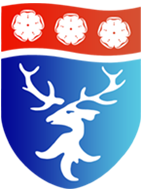Information Technology - Extended Certificate
Click here to ask a question about Information Technology.
Course Description
This course aim to develop your knowledge, understanding and skills of the essentials of IT and Cyber Security. You will gain an insight into the IT sector as you investigate the pace of technological change, IT infrastructure on a global scale, and the importance of legal and security considerations. The course was designed in collaboration with industry experts the qualifications focus on the requirements that today’s employers require.
Course Content:
Unit 1 – Fundamentals of IT
This unit will create a solid foundation in the fundamentals of hardware, networks, software, the ethical use of computers and how businesses use IT. After completing this unit, the knowledge, skills and understanding your students have developed will underpin their study for the additional units.
Unit 2 – Global Information
This unit will demonstrate the uses of information in the public domain, globally, in the cloud and across the Internet, by individuals and organisations. You will discover that good management of both data and information is essential and that it can give any organisation a competitive edge. This unit will provide you with a greater understanding of how organisations use information sources both internally and externally and the types of information they will encounter. This unit will help you to understand the legislation and regulation governing information which flows in to and out of an organisation and the constraints and limitations that apply to it.
Unit 3 – Cyber Security
This unit will allow you to gain knowledge and understanding of the range of threats, vulnerabilities and risks that impact on both individuals and organisations. You will learn about the solutions that can be used to prevent or deal with cyber security incidents resulting from these challenges. You will be able to apply your knowledge and understanding of cyber security issues and solutions by reviewing and making recommendations for ways to best protect digital systems and information.
Unit 9 – Product development
You will learn about different product design methodologies and the role of the product development life cycle. You will also discover the factors that influence product developments. The key to any product development being a success is the analysis, client review, design, testing and final acceptance that takes place. Whether you are building a network, developing a website, developing a system for data analytics or creating an Augmented or Virtual Reality resource, they are all products, it is important to understand the processes required for the development of products and that can be applied to a variety of situations.
Unit 17 – Internet of Everything
This unit is about the use of the Internet and how it is impacting people and society. You will learn about the Internet of Everything (IOE) and how it is used. Using this knowledge you will carry out a feasibility study for a potential idea. You will pitch your idea to potential stakeholders and use your feedback to revise their proposal.
Career Possibilities
This course gives you the opportunity to progress to a degree in an information technology discipline or a degree where information technology related skills and knowledge may be advantageous. This qualification carries UCAS points and is recognised by higher education providers as meeting admission requirements to many relevant courses.
GCSE Grade Profile
Students who study this subject normally achieve 4 in ICT or Computer Science and will normally achieve Level 9-4 grades in a range of subjects including a 4 in Mathematics and English.
We hope you have found the subject videos useful. If you would like to contact the subject leader directly please click on the link above.
Click here to access the Information Technology bridging task.
